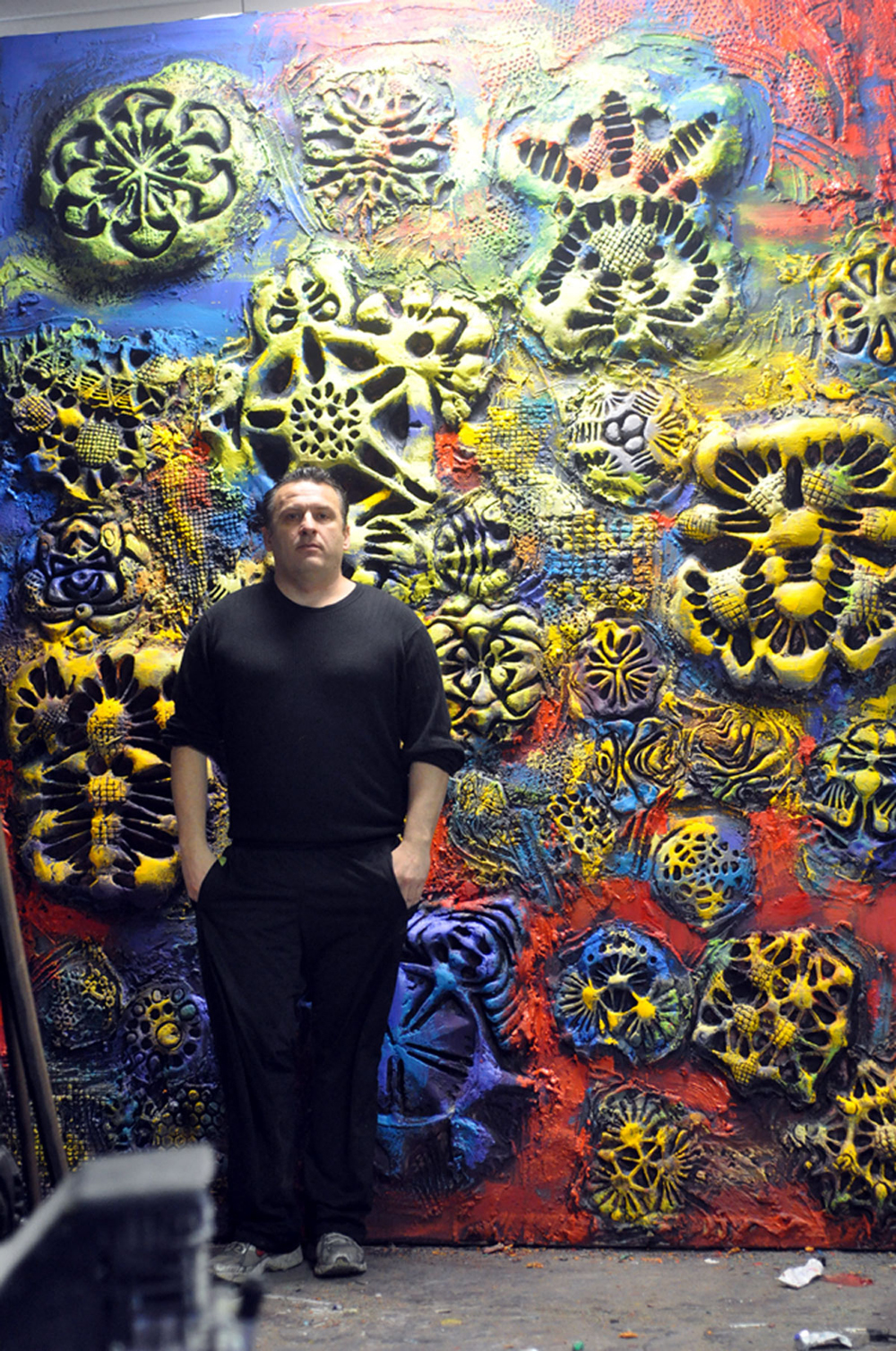Stroke of Genius: Artist Dazzles with 3D-Printed Paintings

3D printing is turning up in all sorts of places these days, and recently, it's been gaining traction in the art world, with one artist using the printers to create giant paintings with loads of texture.
"My paintings address both the visual perception and the tactile," said Ioan Florea, whose artwork is currently on display in Indiana. When people see Florea's paintings, their first reaction is to get close and touch them, he added.
Florea first uses 3D printing to build prototypes for the larger shapes in his paintings. To create the scaled-up versions of these 3D shapes, which are enlarged 20 to 30 times, he cures the resins using heat (by contrast, 3D printing often involves curing resins using ultraviolet light). The resin and pigment are like the paint, and all the shapes are embedded in it, Florea said. Then, he uses transfer techniques to attach the shapes to a canvas. [Image Gallery: The Giant 3D Paintings of Ioan Florea]
Because his paintings are big, Florea uses ultralight materials. "With regular materials, one of my paintings would be 600 pounds, but I try to keep them to 100 pounds," Florea told LiveScience.
In his paintings, Florea likes to explore contrasts. He takes inspiration from nanotechnology — the world of things hundreds of thousands of times smaller than a human hair, but creates his work on 10-by-8 foot canvases. Geometric and organic shapes form another contrast.
Florea originally hails from Transylvania, not far from Dracula's castle. As a child, he would collect animal bones in the woods and draw them. He was fascinated with their 3D shapes, he said. Later, he arranged animal vertebrae into an abstract alphabet. He tried making them with paint, experimenting with many techniques to get the texture he wanted on a canvas. He was waiting for the right technique, and then along came 3D printers, he said.
Florea's paintings are being featured in an exhibition at the South Bend Museum of Art in Indiana from now until May 2015, and at Southern Illinois University in Carbondale in September.
Get the world’s most fascinating discoveries delivered straight to your inbox.
Florea has also developed a fast-drying oil paint, which he said is considered one of the best worldwide. Artists developed their own paints during the Renaissance, Florea said, but later during the Industrial Revolution paint was developed for buildings, cars and other purposes.
"Today there are thousands of pigments and materials," Florea said, adding that he thinks everything can be used in art. In that way, art truly does reflect society, he said.
Follow Tanya Lewis on Twitter and Google+. Follow us @livescience, Facebook & Google+. Original article on LiveScience.com.




